Trains: The Best Starter Train in New York
Posted Mar 19, 2019
Tags: trains, NYC
Learning the New York City subway system when you’re new to the city is an excellent meta-game with lots of little games in it. It is in equal parts delightful and frustrating and teaches you a lot about rapid transit in the United States. NYC easily accounts for about two thirds of rapid transit ridership in the country, and has also served as a prototype for many other American cities embarking on transit-oriented development.
The city has 9 subway lines — five of which run north-south in Manhattan, three run east-west, and one connects Brooklyn with Queens. Most lines are underground except for a few that run on street-elevated tracks. Certain lines run on street level in south Brooklyn. All trains are either lettered or numbered.
I’ve thought about this long and hard, and I think R train is the absolute best starter line to learn the subway system if you’re new to NYC. In this medium post, I will tell you why.
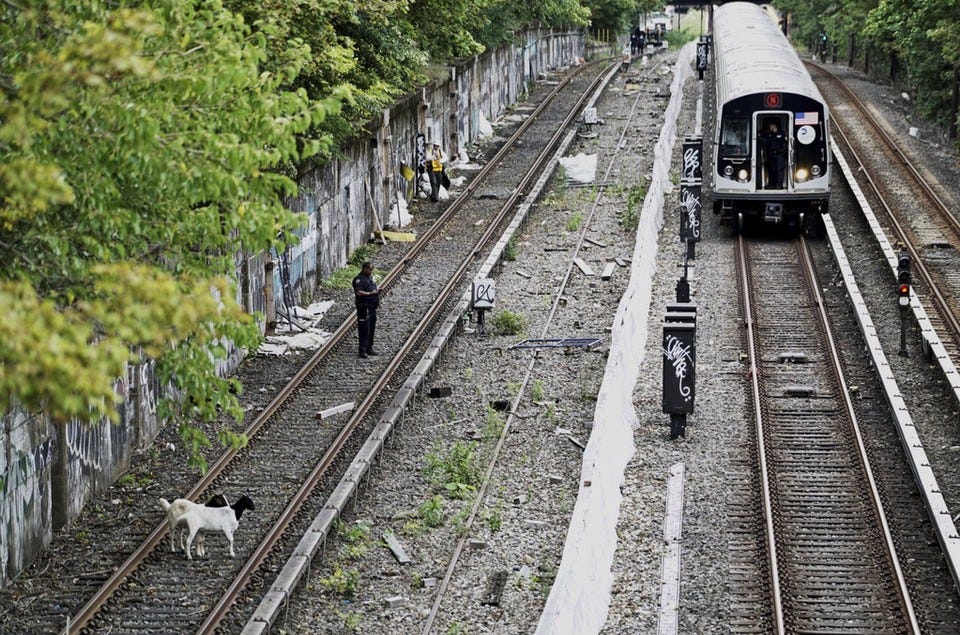
And sometimes there be goats. Source: https://www.newyorkupstate.com/corning/2018/08/jon_tracey_stewart_farm_sanctuary_goats_subway.html
The subway system is great to talk about in theory, and analyze as a transit nerd, if that’s a thing. Riding the subway efficiently however, requires you to have a different set of skills and systematic understanding. I say efficiently, because there are inefficient ways to ride the subway — in terms of cost, but also time.
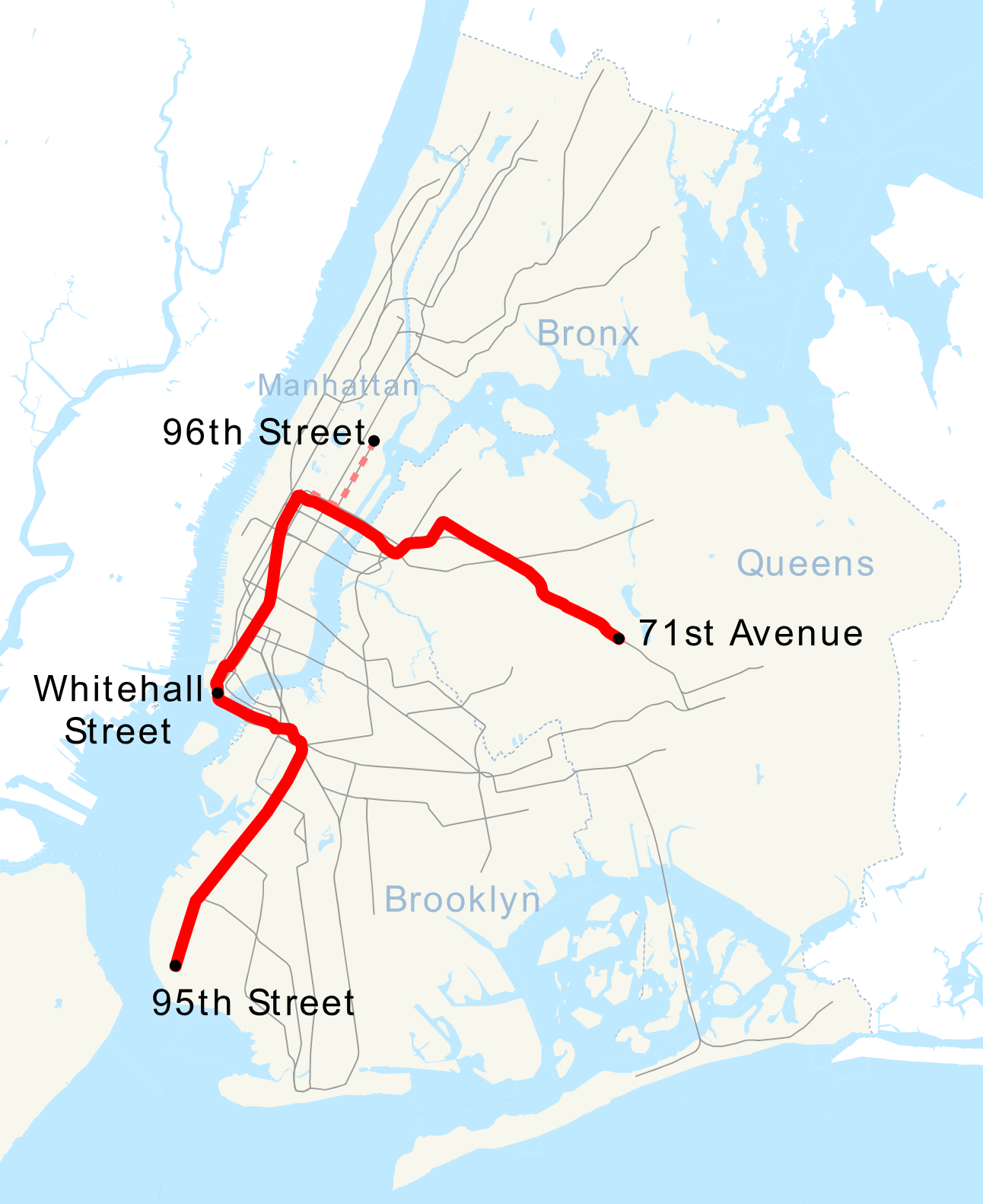
Route of the R train. Source: https://upload.wikimedia.org/wikipedia/commons/9/94/NYCS_map_R.svg
So why is R the best starter train?
It’s Local
Thanks to the wide train trunks that multiple parallel train tracks (which in turn is thanks to wide and straight roads a la US), the subway system has a good number of Express and Local trains. Express trains are great when you need to minimize commute. Most express lines run along with local lines, such as 4,5(Express) with 6 (Local) on Lexington&Park Ave in Manhattan north of Brooklyn Bridge, 2,3(Express) and 1(Local) on 7th Avenue between Harlem and Chambers St Lower Manhattan.
Certain other lines, such as the 7 and J, which run on street elevations optimize between the need for express lines with space & cost constraints of building redundant tracks by laying 3 lines — one for local in each direction, and a rush-hour express line that is unidirectionally express depending on time of day.
While being incredibly efficient and beneficial to riders, the Express lines in the city can be confusing. A lot of trains switch between going express and local depending on where they are. The D, for example, is express in most of Manhattan, but local in the Bronx. In Brooklyn, the D goes express from Dekalb Avenue to 36th Street, but branches off and becomes local until it terminates at Stillwell Avenue. Similarly, Q goes local in all of Brooklyn, but switches to Express in lower Manhattan, only to switch back to Local past Times Sq up into the Upper East Side.
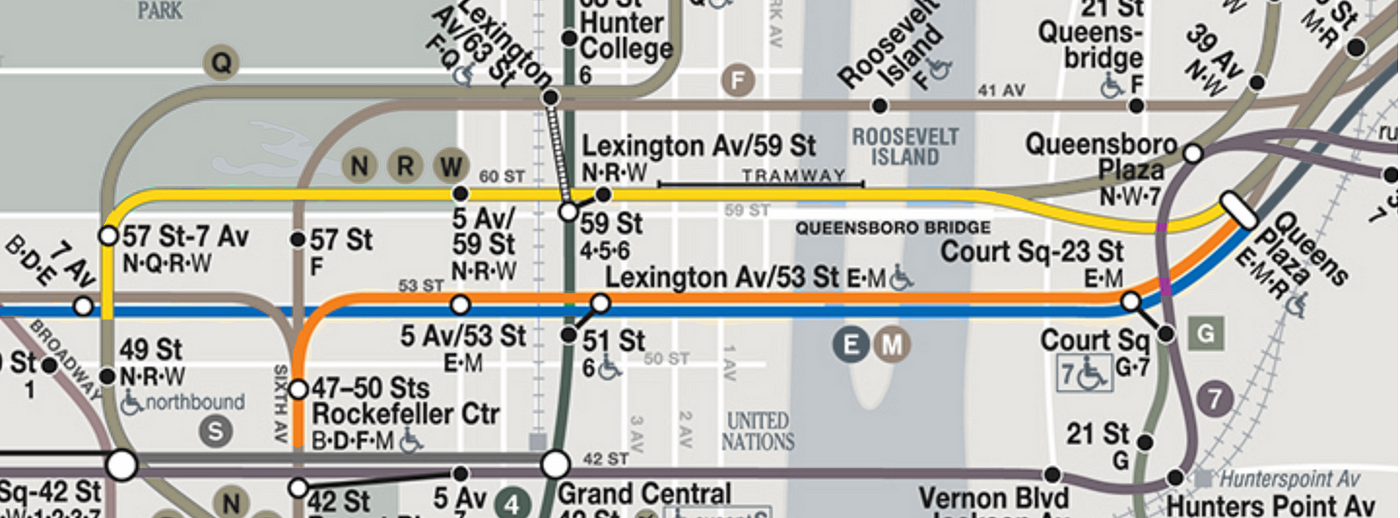
E, M and R reverse branching & interlining as they enter Manhattan from Queens (observe right to left)
If you found that overwhelming to read, you must consider that more than half the Express trains in NYC do this. Add to this the complications of Reverse-Branching (N&R share lines for a portion of Brooklyn, but split away as they head into Manhattan, only to join back past Canal St), and frequent Interlining (E, F, M and R run together in Queens, but split off as they enter Manhattan, where E runs with A,C; M and F run with B,D; and R runs with N,Q and W. B&D run together in all of Manhattan, and N&Q do so — but they re-segregate themselves in Brooklyn, where B,Q and N,D run as two groups. N & D split ways further south in Brooklyn, only to terminate at the same station, where B and Q also terminate!).

B,D,N and Q interlining as they enter Brooklyn
Mouthful. I know. All of this is designed to achieve the elusive single-seat ride experience and while that works, you can see how it quickly gets out of hand.
The R is Local all the way, making it ridiculously simple to follow. From Forest Hills to Bay Ridge, the R stops at every single station. I once saw a friend off at La Guardia Airport, and took the R back to Bay Ridge. My friend made it to Cleveland before I got home from the airport.
This is excruciating, but also relieving in many ways. Being local allows R to serve as a backbone to the lines that it runs on — BMT Broadway Line in Manhattan, BMT Fourth Avenue Line in Brooklyn, and BMT Astoria Line in Queens. This is perfect for a starter train for multiple reasons:
- You quickly understand the topography surrounding the train line. Familiarizing yourself with every stop on the train is in and itself a good way to begin learning the system.
- Mistakes happen. If you ever get on a train that goes the opposite direction, or pick the right train but miss your stop, the damage done is pretty small thanks to its speed and the usually small distance between local train stops. The R lends well to slow reaction times and mistakes that occur while you wrap your head around the system.
- Being local also means that the train spends a lot of time in familiar parts of the city, making it helpful correlate stops with actual places above ground. This is true only south of midtown Manhattan, but useful nevertheless. It also hits nearly all the major junctions in the city — Times Sq, Herald Sq, Union Sq and Canal St in Manhattan, Dekalb Ave and Atlantic Av/Barclays Center in Brooklyn, Queens Plaza and Roosevelt Av/Jackson Heights in Queens.
- Frequent run-ins with Express alternatives at various stages ensures that the train is never truly crowded. While this is not a big deal, it is great in terms of keeping commute insanities in check and finding seats a realistic expectation — two valid concerns for someone new to the subway system.
Nudges You To Level Up
A unique advantage of the R train is that it puts you in the (low, low) region of Cognitive Flow Space w.r.t navigating the subway.
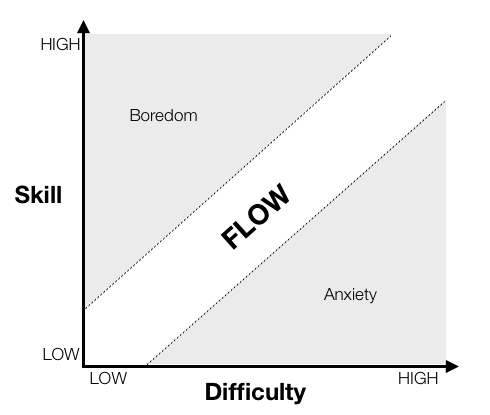
Source: https://www.gamasutra.com/view/feature/166972/cognitiveflow_the_psychology_of.php?print=1
As someone new to the city, it’s very likely that your skill navigating a transit system is pretty low. Even if you come from a place that has an equally or more complex transit system (Seoul, perhaps, or even Istanbul?), language and sign conventions can be quite the barrier.
The R not only starts you off comfortably in the bottom left, but by running local and allowing many transfers, it sets you up to quickly build skill, driving you into Boredom, and aching to level up.
The sheer time lost in riding the R train will nudge you into looking for Express alternatives. In Brooklyn, this could be the D or N. In Manhattan, it’s the N or Q. In Queens, it’s E, F or M (ripe opportunity for leveling up into reverse-branching & interlining madness). Combine this with the fact that nearly all trains (including the PATH and LIRR systems) allow transfer to the R, making it easier to start anywhere in the city and get to R. This significantly alleviates the Anxiety arising from navigating Express trains from the get go, or making multiple obtuse transfers to endlessly optimize a trip.
Maps in general start being useful only when you begin to actively self-reference within its framework, and New York City subway is no different. The R provides an excellent reference point to understand other train lines from with regards to their similarities and differences.
In conclusion, the R train reflects the fundamental features of the New York subway that are worth learning:
- Trains run north-south in Manhattan and radially outward in surrounding boroughs.
- Train lines often overlap in Manhattan, successively branch out as they reach deeper into The Bronx, Brooklyn and Queens
- Reverse-branching and interlining are a fairly frequent occurrence and have their own benefits (and pitfalls)
- A good portion of junctions allow selective cross-platform transfers.
- Express trains run local, while redundant local trains stop in the night to account for efficient 24x7 service
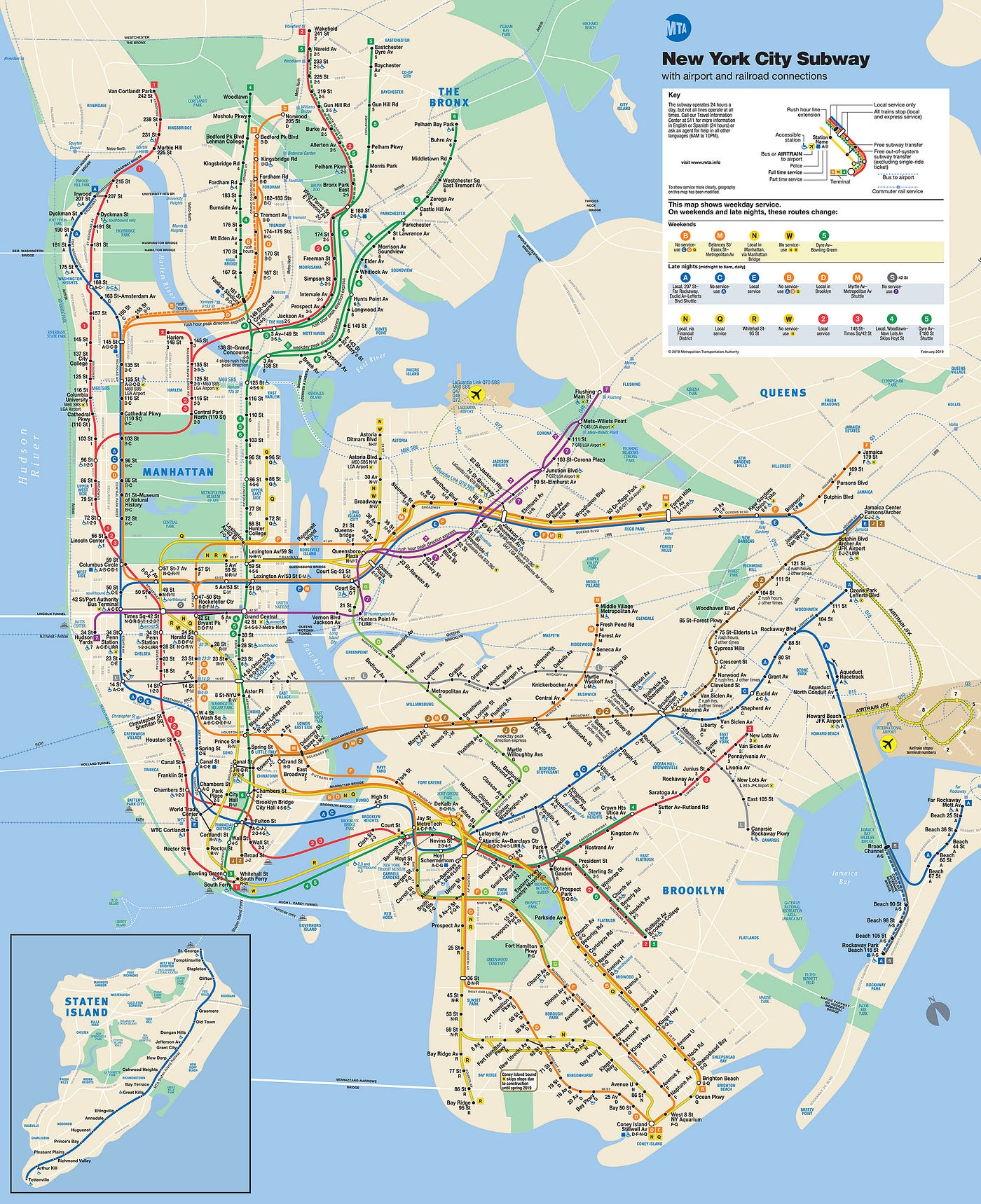
Let me show you on the map where it hurts. Source: http://web.mta.info/maps/submap.html
I like trains, and in my time here, learning this system has greatly helped me understand and navigate the city. Of course, the system continues to fail in covering certain parts of the city, but overall it works just enough to ride the thin line between its riders tolerance and frustration while playing a key role in influencing the real-estate as well as socio-economics of a city as diverse as New York.
While the features of subway are by no means unique to it, I’m not too sure if understanding them gives you any head start in navigating mass-transit elsewhere. That said, I’m sure there are excellent starter trains in other major transit-oriented cities that you can begin learning from.